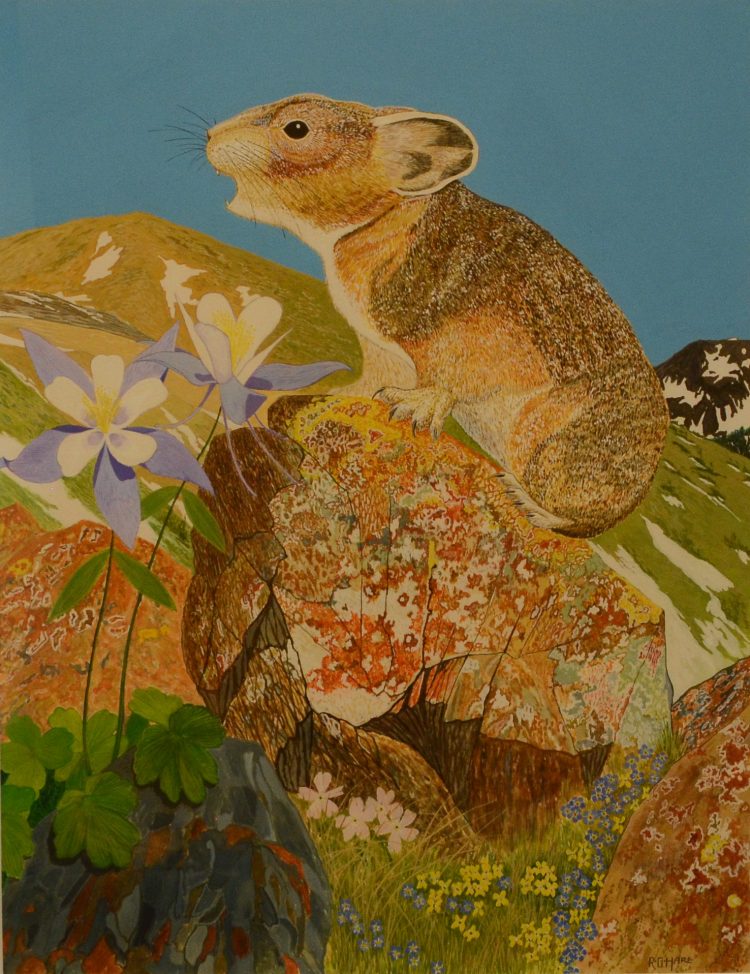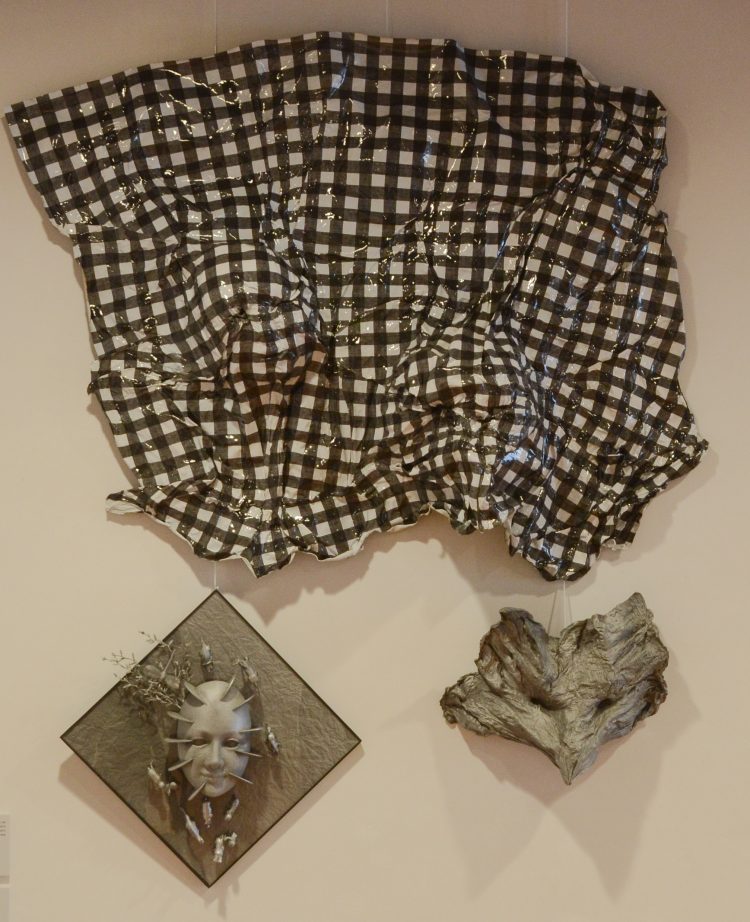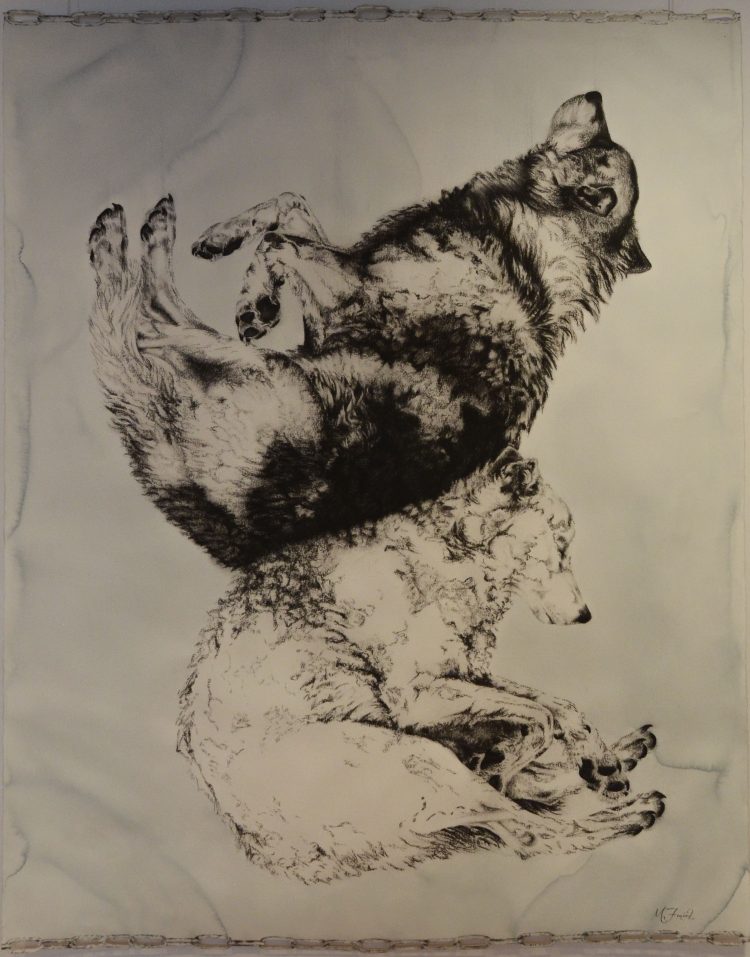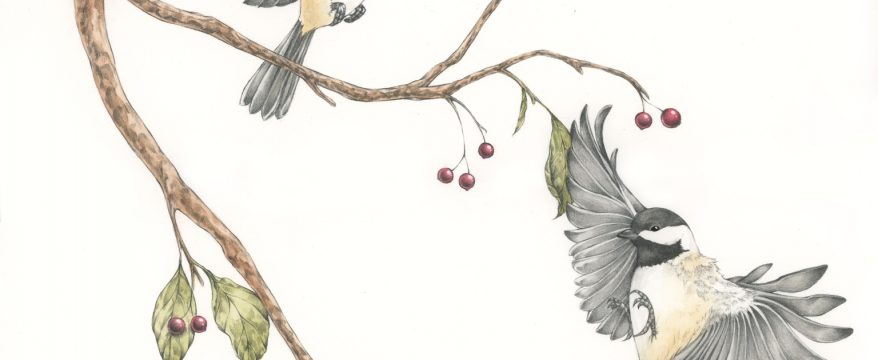Seton Monday: Art from More Beautiful and Amazing
Seton Monday is a bi-weekly blog series sharing updates and learnings on Ernest Thompson Seton and the Academy’s Seton Legacy Project, curated by David Witt. In this edition, David shares art from the Seton Legacy Project’s 2019 art exhibition More Beautiful and Amazing.
Learn more about Seton and the 2020 exhibition at http://ernestthompsonseton.com/
I invited Bob Hare to show a gouache on paper in the 2019-2020 exhibition at the Academy for the Love of Learning, “More Beautiful and Amazing.” I have included his words directly below, followed with a comment by Seton. Bob writes about his adventures in Yosemite National Park and elsewhere in the Sierra Nevada.

BOB HARE STATEMENT ABOUT THE PIKA
After spotting a pika on a climb up Wheeler Peak with my friend David Witt in 1977, I painted this pika for the cover of New Mexico Wildlife Magazine. While resting from the steep climb above Williams Lake, we heard the call of this wee alpine sprite, or shall I say alpine spirit. For the pika represents for me the very spirit of the exposed mountaintop islands that float above the forests and valleys below. This cute cousin of the hare family lives year-round in this often cold, windy, and snow-covered habitat finding safety in the rocks and feeding on the succulent low-growing plants. On sunny days of the brief alpine summer the pika scampers about harvesting grasses and carefully arranging them on the rocks to cure. Then the pika squirrels away this “hay” in their winter retreats under the rocks to live on during the long dark months of winter.
But our pika friends are greatly threatened by Global Warming because they depend on their tundra-like alpine conditions to survive and as the climate warms this arctic-like habitat zone will move upward on the mountains—eventually disappearing altogether except on the very highest mountains of North America. Since Mount Wheeler is New Mexico’s highest mountain and we saw this pika just 1,000 feet below the summit, the last New Mexico pika could find itself trapped on the summit with nowhere to go and no habitat left if we do not reverse Global Warming.
I don’t want to live in a world without the call of the pika. Do you?
ERNEST THOMPSON SETON STATEMENT ABOUT THE PIKA
Following the trail of a Coney that bleated derisively at me, I began at once to roll rocks aside in an effort to follow him home to his den. When about ten tons of rock had been removed, I was baffled. There were half a dozen possible lines of continuation, and while I paused to wipe the “honest sweat” from my well-meaning brow, I heard behind me the “weak, weak,” of my friend, as though giving his estimate of my resolution. (Lives of Game Animals, Vol. IV, pg. 646, 1928)
A moment after stepping into Jack Bordnick’s studio, you are left wondering whether you are in the lobby of an industrial design firm or an atelier d’artiste. Maybe a bit of both. Engineering projects sit next to 3-D portraits, materials of unidentifiable origin co-habit with the mundane such as straws and plastic toys. It is all combined with great imagination and a touch of fantasy.

Man as seen by the animals (bottom left), Mixed media/2019, Tales of the wolf (bottom right), Formed vinyl/2019
JACK BORDNICK STATEMENT
My sculptures incorporate surrealistic, mythological and magical imagery — often with whimsical overtones — aimed at provoking our experiences and self-reflections. Aiming to unbalance our rational minds, the predominant imagery deals mostly with facial expressions of both living and “non-living” beings, and things that speak to us in their own languages. They are textural, metallic and mixed media assemblages that have been assembled, disassembled and reassembled, becoming abstractions unto themselves.
My thoughts about Nature: “Mother Nature: We’re changing her, without her permission”
ERNEST THOMPSON SETON STATEMENTS
Whenever travelers penetrate into remote regions where human hunters are unknown, they find the wild things half tame, little afraid of man, and inclined to stare curiously from a distance of a few paces. But very soon they learn that man is their most dangerous enemy, and fly from him as soon as he is seen. It takes a long time and much restraint to win back their confidence. (Wild Animals at Home, Foreword, 1913)
Some day I shall write a history of man as seen by the animals. (Lives of Game Animals. Vol. 1, pg. 55, 1925)
We have been fed for so many generations on tales of the Wolf’s ferocity, treachery, rapacity, cowardice, and strength, that most persons begin with a wholly wrong picture of this most interesting animal. (Lives of Game Animals, Vol. 1, pg. 319, 1925)
Like so many others (millions of readers over the past 126 years) I first connected with Seton in an emotional way after reading the Lobo story (which shows up on this web site in the Lobo, Wolves, and Wildlife Conservation section) in Wild Animals I Have Known. Less well known, but more interesting than the account of non-wolves Romeo and Juliet, the dedication of Lobo to his mate is both tragic and wonderful. Among those inspired by the story is Meredith Feniak whose large-scale drawing of the two wolves shows them reunited at the end of the story. It can be seen in the Academy’s Seton Gallery during our 2019-2020 show.

MEREDITH FENIAK AND TWO WOLVES
Begun as a preparatory sketch for a site-specific installation in a Denver house that was set for demolition, “Restoring Order” quickly became a piece on its own merits as it pulled on the heartstrings of everyone who visited my studio and learned Seton’s story of Lobo and Blanca and how the two changed the course of Seton’s life and contributed to a change in American values.
I was trained in botanical illustration, a specialized form of scientific illustration known for its precision and accuracy resulting from extensive preparatory research. Completed in charcoal, an untraditional media for scientific illustration, the process involved in the making of this drawing followed almost all other aspects in the traditional process – a process Seton also followed. Photographs, artifacts, and Seton’s writing provided primary source information to draw this life-size, scientifically accurate portrait of Lobo and Blanca. After my own dog’s anatomy proved too different from a wolf’s, I contacted the world-renowned wolf expert Doug Smith for his assistance. Smith graciously provided a high-resolution image of Yellowstone’s Druid pack, taken in the winter of 2007 from a helicopter. Some necessary tweaks were made to proportions, facial structures, and fur patterns, but nevertheless two of the napping wolves were the perfect photographic reference models of the distinctive Canis lupus anatomy.
“Restoring Order” reunites Lobo and Blanca, whether the viewer decides it is on a snowy valley in the sanctuary of Yellowstone, the heavens, or as Seton placed their lifeless bodies in a shed in New Mexico’s Currumpaw Valley. The piece is also a reflection on an ongoing conundrum: how can we restore ecological order to the American West, which now includes a disproportionate human population?
ERNEST THOMPSON SETON AND OUR LAST VIEW OF LOBO AND BLANCA
I took the chain from his neck, a cowboy helped me to carry him to the shed where lay the remains of Blanca, and as we laid him beside her, the cattle-man exclaimed: “There, you would come to her, now you are together again.” (Wild Animals I Have Known, pg. 54, 1898)
Emma Felt Bird Drawing
Featured image: Chickadees and nuthatches, Watercolor and graphite/2019
I discovered Emma Felt’s work just too late to include her in our 2018 Lobo show, but I did ask her to show in this one. The quote below is from Emma’s website. Her mixed media work was a particularly good fit for one of Seton’s early stories. (There is a slight reflection showing from the glass covering the art work—I took the picture as is on the wall of the Seton Gallery where it is on view during the 2019-2020 exhibition.)
EMMA FELT STATEMENT
I try to capture the wonder and whimsy of the natural world in my artwork. The unknown can be surprising and just as spectacular as the organic forms we can see. New juxtapositions make what’s different between elements more apparent but also allow for the contemplation of what makes them the same. I use traditional technical botanical skills and techniques to root my subjects to some reality, to let what is different about the work stand out.
ERNEST THOMPSON SETON STATEMENT ABOUT CHICKADEES
Mother Carey sent them all a warning that they must move to the south, for hard frost and snow were coming…the Nuthatches were in such a state of bustle that at length the Chickadees did catch a little of the excitement, and left off play for a while to question their friends; and they were not pleased with what they learned, for it seemed that all of them were to make a journey that would last many days. (“Our Animal Friends,” 1893)


